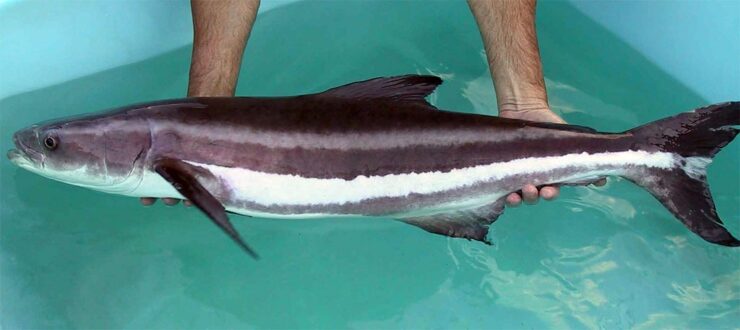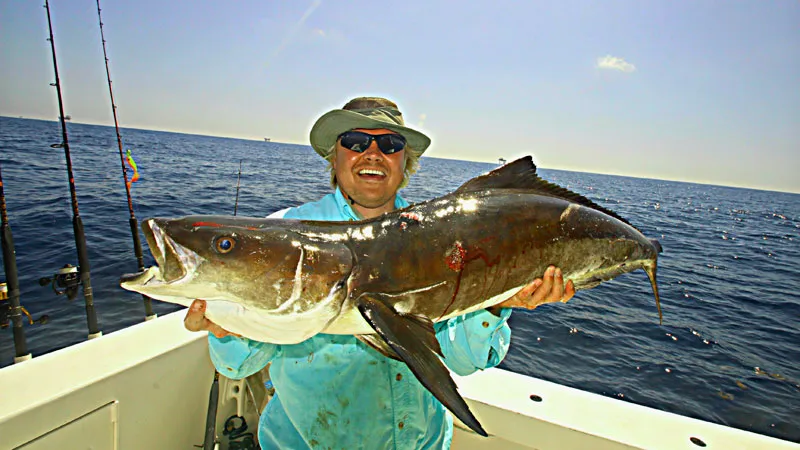Lemon Fish or Cobia (Rachycentron canadum) also know as Ling in Texas or Crab Eater in some parts of Florida. They are caught in the Gulf of Mexico as well as the Atlantic Ocean. Cobia (lemon fish) are quite easy to identify. They are brownish in color with a yellow-white belly as well as whitish stripe running from the mouth to just above the eye to the tail. Cobia have a flat head sort of like a catfish with the lower jaw protruding past the upper jaw. One unique identification feature is the short ‘isolated’ spines of the dorsal fin. They grow to a maximum size of a 140lbs.
Cobia (Lemon fish) are found from the coast to well offshore. Lemon fish or Cobia are not schooling fish but you can often find them in small groups.
Cobia can be caught year round in Louisiana waters with the spring and summer months being the best. In the winter most of the Cobia migrate out of Louisiana waters. But it has been discovered that some simple move further offshore into deep waters, usually around Oil Platforms. Cobia or Lemon fish are structure loving fish. They spend a lot of their time around bouys, oil platforms, and can be quite numerous in the grass rips that form off our coast. Cobia have a unique habit of coming to investigate your boat as you idle close to oil platforms. This leads to great opportunities at sight casting to them. At times they can be very aggressive and strike anything you cast their way, at other times they can be very picky and demand nothing short of live bait.
Key Notes and Tips:
*Crabs, shrimp, small fish, and suqid are common forage for the Lemon Fish!
*Jigs are the most frequently used artificial to catch Cobia.
*Cobia (lemon fish) are a member of the Rachycentridae family. They are the only species in this entire family.
*Cobia or Lemon Fish or often caught by casting to the backs of Manta Rays.
*Cobia (Lemon fish) can often be found beneath floating objects, and the offshore rips that have lots of grass are usually loaded with cruising lemons.
*Cobia (Lemon fish) are attracted to the disturbance made by your motor. So they will often come to your boat as you hookup to a oilrig. The first minutes at a rig give you the best chance of catching a lemon fish so be prepared before you approach a rig.


